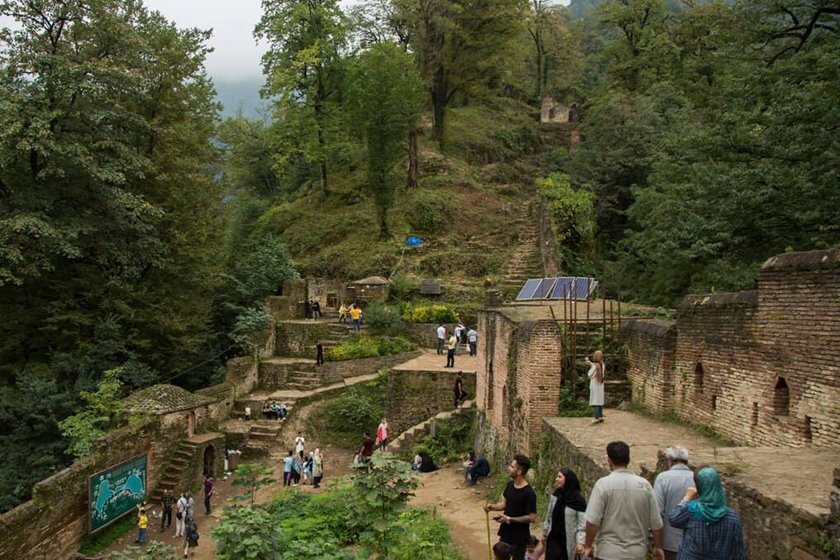‘Strange structure’ exposed near ancient stronghold in northern Iran

TEHRAN – The remnants of a “strange structure” were discovered near Qal’eh Rudkhan days after the historical stronghold underwent restoration in northern Iran.
“A team of local researchers has discovered a strange structure which was completely hidden from sight,” Gilan province’s tourism chief said.
The ruins, which were hidden under tree trunks, bear exterior coatings of Sarooj (a traditional water-resistant mortar used in Iranian architecture), the official explained.
“This strange structure is not unrelated to Qal’eh Rudkhan… Seemingly, the structure served as an exclusive seat for elite forces related to the rulership of the fortress.”
Providing further details, the official said the structure was probably part of a bigger observation post.
“The opening of this structure is about six square meters and the depth of its specific part is four meters… Moreover, traces of hand-made lime mortar and soil are evident on the floor of this structure.”
“There is a strong possibility that this structure was a part of a tunnel or the entrance to the fortress or a natural cave near this historical monument, and the exact theory of this discovery will be announced after archaeological investigations.”
So far, a (government) budget of 25 billion rials ($50,000) has been allocated to the restoration project, the official said earlier this week. “Due to its old age and being located in a humid and forested climate, much damage has been caused to this historical monument over centuries.”
Preliminary evidence, uncovered by digging, indicates the foundation of the structure was built in the Sasanian era (224–651) and rebuilt in the Seljuk’s reign (ca. 1040–1157).
Made of brick and stone, the walled fortress occupies an area of about 50,000 square meters. The property is built on two sides of a jagged rocky region, so its architecture benefits from natural mountainous features. To this day, there is no precise information regarding the date of its construction. However, the monument was continually in use until the Zand Dynasty in the 18th century.
To access the castle, visitors have to pass through a hilly winding route in a dense forest. Upon arrival, a big entrance gate flanked by relatively tall towers welcomes visitors. Stepping inside, there are residential quarters, a bathhouse, and a running spring passing through. This spring was the main water source for the fort but following an earthquake, it ran dry.
The fort’s eastern side is a bit smaller and has more military characteristics. It consists of two towers, another entrance, a prison, and an emergency exit. Above the north and south walls are several octagonal areas and the deliberate cracks in their walls are assumed to have been for monitoring the adjacent area and shooting arrows at approaching enemies.
Above the front entrance was once an inscribed plaque (which is currently on display in a museum in Rasht) stating that the fort had been renovated for the first time between the years 1539 and 1542 by Sultan Hesamoddin. Historians say that during that time the castle was known as the Hesami Fort.
Though being threatened and even partly eroded by excessive humidity and vegetation rooting in the chinks of its old but lofty walls, the Rudkhan fortress is still standing tall in very good condition as compared to other examples of the same time.
AFM
Leave a Comment